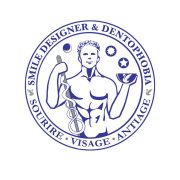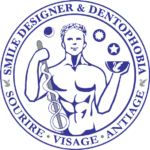DO YOU WISH to beautify your SMILE?
rediscover the power of your smile
thanks to the latest innovations
in SMILE aesthetics
THE CHOICE OF CERAMIC DENTAL FACES
to hope for ideal teeth and a beautiful smile
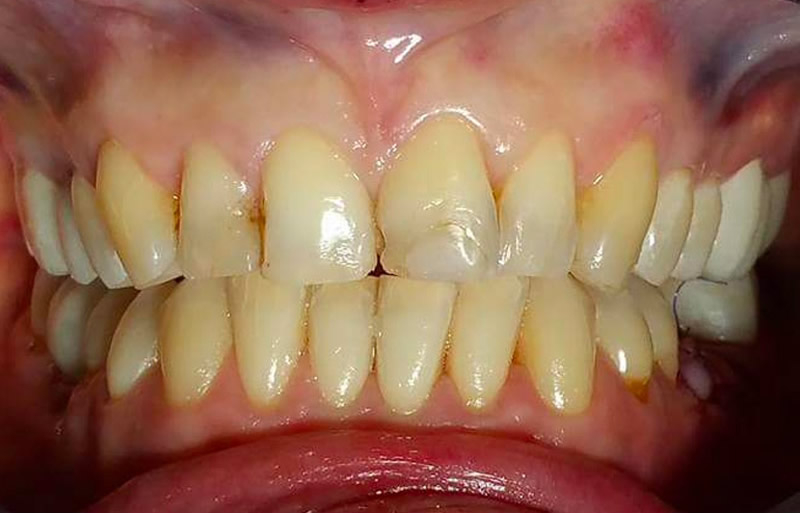
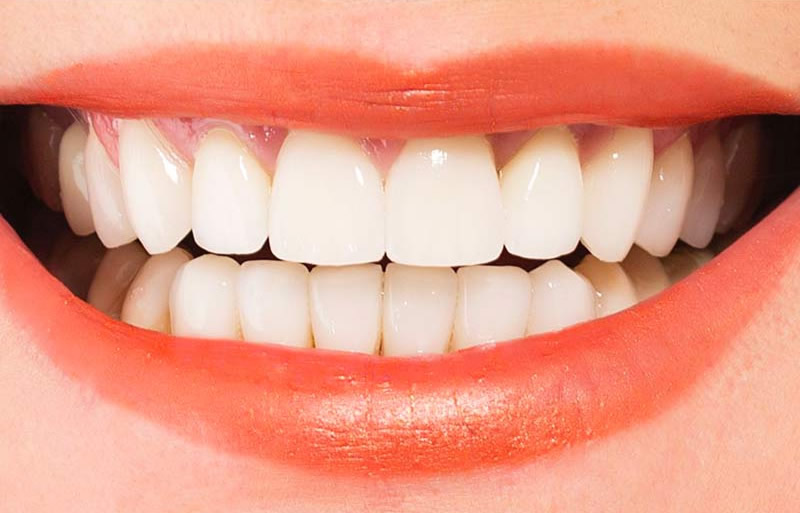


"BEAUTY SPEAKS IN A LOW VOICE. IT PENETRATES ONLY THE MOST AWAKENED SOULS".
FRIEDRICH NIETZSCHE
WHAT IS A DENTAL VENEER?
The installation of dental veneers is a set of techniques for the installation of aesthetic prostheses performed by a dentist who has oriented his practice towards aesthetic dentistry, in collaboration with a “Master Ceramicist”.
Dental veneers (i.e. porcelain laminate veneers) are aesthetic prostheses, permanently bonded to the visible surface of the teeth of the smile. The teeth of the smile are the incisors, canines and premolars. Their function is to improve the aesthetic appearance of the teeth.
A dental ceramic veneer is a thin film of ceramic that is very resistant and aesthetic when bonded to the tooth and custom-made.
They meet the aesthetic demands of patients:
- How to change the color of teeth to have white teeth?
- How can I have my teeth reshaped for a brighter smile and a rejuvenated expression of my smile and face?
- How can I modify and beautify my teeth to have the perfect smile of the ” stars”?
Dental veneers correct the shape and color of teeth. The color is determined according to the patient’s wishes in a shade ranging from natural ivory to perfect white enamel.
They give the smile an undeniably healthier aesthetic appearance.
A dental veneer imitates the texture, color, and brightness of the most perfect tooth enamel. The goal is to create a perfect smile, while maintaining the appearance of natural teeth.
Dental veneers are made of different materials but the most consensual is ceramic. Different types of biocompatible ceramics are used for its manufacture, mainly very resistant varieties of ceramics.
Ceramic is biocompatible. It offers the most natural result. It is very resistant. There are also veneers made of composite material, but the result is less convincing and long-lasting, especially in the medium and long term.
WHEN ARE VENEERS USED?
Change the color of your teeth
Do you find the color of your smile teeth unattractive? As with these patients, choose your ideal tooth shade from a color chart.
Correct imperfections in your teeth
Whether you have a broken or stained tooth, teeth that are too short or too long, dental veneers can be the solution to correct your small defects.
Correct the malposition of your teeth
Do your teeth overlap or do you still have a misaligned tooth despite orthodontic treatment? Dental veneers can correct these imperfections.
Correct the spaces between the teeth
Are your smile teeth too far apart? Do you have the teeth of happiness? Or, as in the clinical case on the right, teeth are missing (agenesis of the lateral incisors).
With dental veneers, it is possible to fill the gaps between teeth.
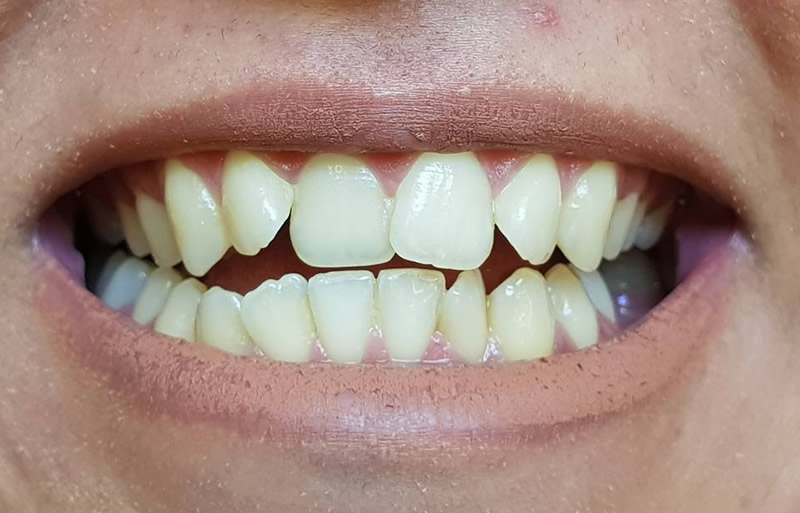
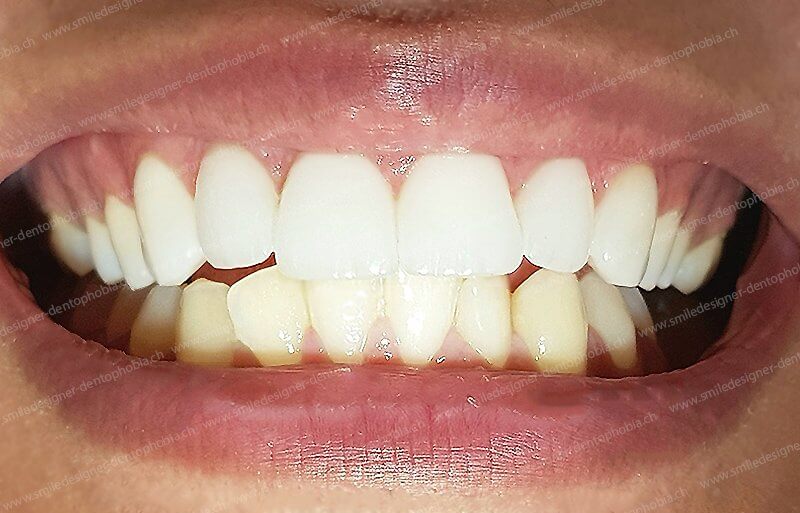
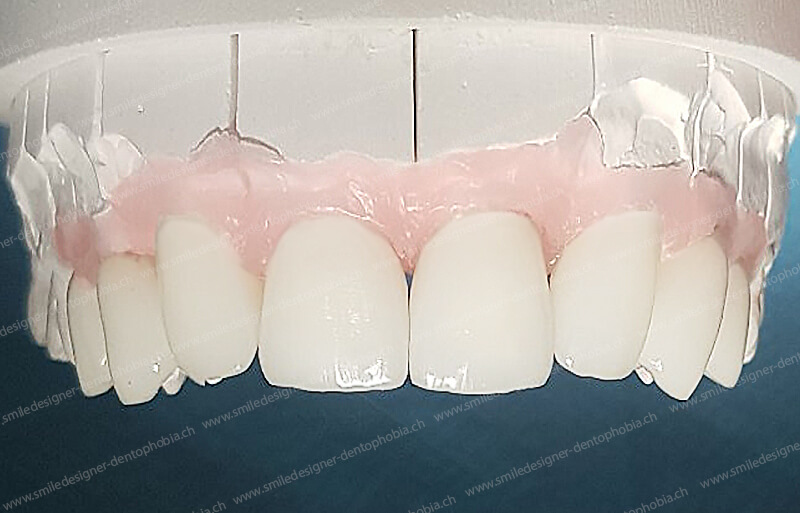
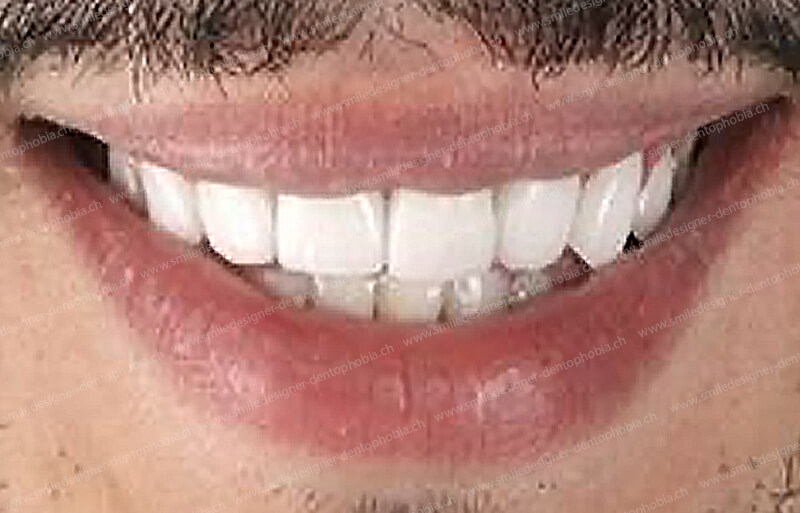
Patients turn to a cosmetic dentist for a beautiful smile. Dental veneers allow you to rejuvenate your smile, redo your front teeth, correct unsightly stains, stains or the shape of your teeth.
This technique is by nature conservative of dental tissue and biocompatible if the material used is ceramic or even zirconia.
They should be indicated as the first choice for restorative treatment of smile teeth with an indirect technique and fabrication by the dental laboratory (Friedman 1998).
Dental veneers are for anyone who wants to beautify their smile by modifying their smile teeth, i.e. incisors, canines and premolars. This is the ultimate cosmetic dentistry and smile rejuvenation technique to restore a beautiful smile that has been lost due to aging or wear.
They are intended for people who wish to change the appearance of their smile, judged to be insufficiently aesthetic, by improving the color of the teeth and/or their shape and/or their position (within a certain limit).
If you have beautiful, healthy teeth that are not positioned correctly, then veneers can correct some of the tooth positioning defects. But orthodontics, using aligners (transparent trays) is most often indicated as a prerequisite or preparation of the clinical case before the placement of veneers.
If you wish to modify the shape, color and enamel of your teeth, then veneers are the best choice.
In order to avoid mutilating healthy teeth, it is often advisable to combine a smile alignment with transparent orthodontic aligners and then the application of veneers.
CERAMIC DENTAL VENEERS:
INDUSTRIAL VS. ARTISANAL PRODUCTION
There are different techniques for manufacturing dental veneers: depending on the type of dental biomaterial used and the type of manufacturing, the aesthetic result is more or less optimal.
Ceramic dental veneers are non-porous unlike resin dental veneers. They have the advantage of not being able to stain.
Custom made, ceramic veneers are a much more aesthetic and durable alternative to resin composites and less damaging than dental crowns.
Ceramic is a biomaterial: that is to say that it is biocompatible. The gum and bone tissue cling to the ceramic.
Dental ceramics have the same hardness as enamel. This means that ceramic veneers are non-abrasive to the opposing teeth and do not wear out any more than natural teeth.
Customized dental veneers are made by taking a traditional impression or by scanning your teeth with a 3D intraoral camera. Then, our digital laboratory, thanks to a dedicated software, will model a first aesthetic project in the form of a model. This project is subject to your validation or correction, until your choice is made.
The rest of the treatment will depend on your choice between an industrial manufacturing of veneers by an international brand of dental veneers or an artisanal manufacturing of your dental veneers by a Master ceramist in the dental chair.
the choice of a CUSTOMIZED MANUFACTURING
If your choice is for a handcrafted product :
In this case, dental technicians, craftsmen with proven talents, called Master Ceramists, put their long experience at the service of patients.
Like a “tailor made to measure”, the ceramist and the patient exchange directly between them, sometimes within the dental office, to define the aesthetic project.
Thanks to their know-how as aesthetic craftsmen, they will shape a smile with meticulousness and personalization, using in turn a collection of techniques and materials, according to their needs, like a painter chooses his colors and pigments on a palette.
This practice is reserved for specialized dental technicians: they are ceramists.
They are the keys to a “haute couture” smile, made in a traditional way by these dental laboratory technicians, specialized in cosmetic dentistry.
We speak of “master ceramists” for the most renowned.
The mastery and customization of the end-to-end production chain, totally made to measure, is the biggest advantage of this handcrafted production.
The dental laboratory technician sometimes comes to the chair to meet “his patient”. He can discuss the aesthetic project directly with the patient in order to decide on his choice of techniques and cosmetic ceramic materials.
The main disadvantage: the cosmetic dentist must find a master ceramist close to the dental office to perform high value-added work.
Few in number, these craftsmen are concentrated near the metropolises that host dental offices specialized in cosmetic dentistry.
At Smile Designer & Dentophobia cosmetic dentists work with Master Ceramists for smile rejuvenation requests.
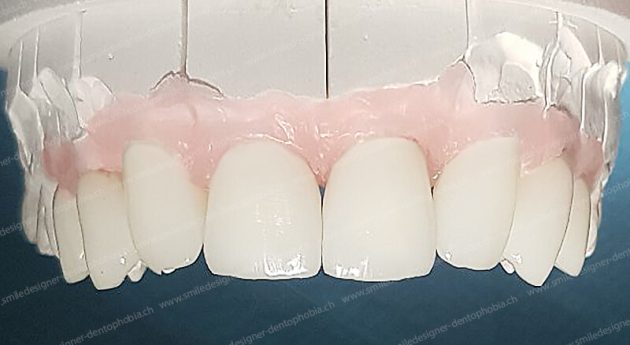
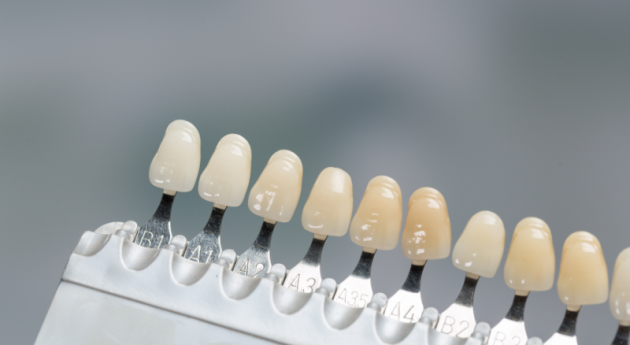
The choice of an industrial manufacturing
If your choice is for industrial manufacturing :
You will have a manufacture of dental veneers in a single material, a single technique and in general a single layer of ceramic.
The advantage of this solution is that the aesthetics are reproducible and without surprises since it is industrial. It is much less technically dependent. It is suitable for dentists of all levels of training.
In addition, in case of loss or breakage of a facet, there is an international guarantee with certain leading American brands in this field, such as Lumineer. This means that, for example, a patient treated in Dubai can find the technical characteristics (colors, shapes) of his veneers on the Data base of the brand and change a veneer removed in Geneva.
The major disadvantage is that the aesthetic level, although very satisfactory of these processes, is very stereotyped in an American genre rather “Hollywood”.
It is impossible to personalize it, according to the patient’s choices, because the manufacturing is delocalized in a distant factory and none of the company’s salaried prosthetists have real contact with either the patient or the dentist.
The industrial brands of ceramic or resin dental veneers on the market have the advantage of being available in any dental office, almost anywhere in the world. Dentists are therefore not dependent on a local prosthetic laboratory that is not competent.
These companies offer, among other things, minimally invasive “pellicular” ceramic dental veneers without grinding the enamel.
These ceramic dental veneers are less than 0.3 mm thick.
This extreme thinness, without loss of strength, usually exempts the patient from preparing the teeth by grinding the enamel.
Their biggest advantage is the reversibility of the installation of these non-invasive dental veneers, without preparation.
Their biggest disadvantage is the depersonalization and industrialization of the manufacturing process, without proximity.
The very high end is not structurally conceivable in this technique since there is no personal contact between the dentist and the factory technicians.
WHAT MATERIALS ARE USED TO MAKE A DENTAL VENEER?
Ceramic dental veneers have been around since the 1980s. But it is since the beginning of the XXIst century, thanks to the progress of ceramic materials, that the dental ceramic veneer has received its letters of nobility.
Since then, technological advances, both in the field of ceramics and biological adhesives, are constantly revolutionizing manufacturing and bonding protocols.
Today, there are different possibilities for dental veneer materials.
It is fired on a refractory material.
It is very demanding on the way to treat it technically. But, it gives unparalleled aesthetic results.
It is the facet of the elite of the ceramists.
“E-max” is the trade name of a ceramic brand. Emax is a monolithic glass ceramic made of lithium discilicate. In terms of name, the Emax is to lithium discilicate what the ” frigo ” is to refrigerator.
There are some confusing homonyms.
There are three ways to make a dental veneer in E-max or equivalent in other brands:
- Single block monolithic: the veneer is as thin as industrial veneers but with little depth of shade ;
- Cut back, in two layers: it gives a facet with a lot of finesse and more relief of color ;
- Laminated in several layers: this gives more life to the material and the veneer.
Thin and strong at the same time, they are however difficult to bond to enamel and dentin, even with the latest generation of adhesives.
Less aesthetically demanding but still very successful, they are rather indicated for more posterior teeth, requiring ¾ crowns, “inlay-onlay” or “table top” with primary mechanical retention.
They are also indicated for the front teeth of the lower jaw.
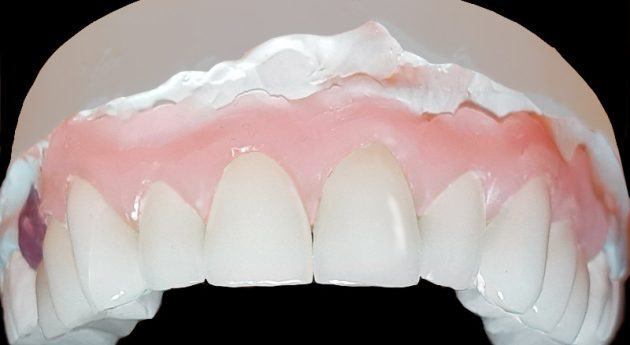
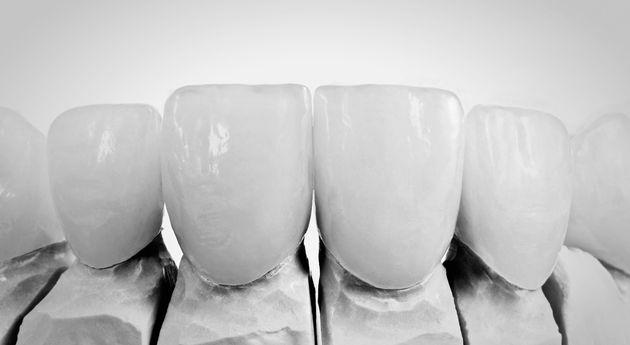
Advantages of ceramic veneers vs. composite veneers
Porcelain veneers have advantages that make them preferable to composite resins: Porcelain veneers are very thin shells made of ceramic. They are permanently bonded to the teeth.
- From an aesthetic point of view, it is by far the best solution. The aesthetic rendering is superior to all other techniques with a control of the colors in its three components: hue, saturation, luminosity;
- Better stability over time;
- Better periodontal biocompatibility of the ceramic or zirconia material;
- Better hygiene thanks to the polished surface of the ceramic;
- Better marginal sealing.
- Delicate and difficult to achieve both in the office and in the laboratory by a dentist and aesthetic ceramist or by a good brand of industrial veneer.
- Expensive as all sophisticated techniques with high added value.
- Resin veneers are a less expensive alternative to ceramic veneers;
- Its implementation is less demanding andfaster;
- They are much less aesthetic than ceramic;
- The color is not stable in time and yellowing;
- It does not restore the rigidity of an intact tooth (Reeh et al 1994)
YOU ARE UNIQUE!
CLINICAL CASES OF SMILE RESTRUCTURING CLINICAL RESULTS WITH CERAMIC VENEERS
our selection of techniques to hope for a DREAMED SMILE
IN ONLY TWO SESSIONS
HOW DOES FACETTING SESSIONS WORK?
Dental veneers are a set of aesthetic prosthesis techniques performed by a dentist who has oriented his practice towards cosmetic dentistry.
Dental veneers are a quick and painless beauty enhancement technique for your smile teeth.
If you wish to beautify your smile, the cosmetic dentistry team at Smile Designer and Dentophobia in Geneva will welcome you for a dental and aesthetic assessment and an analysis of your smile.
Using digital cosmetic dentistry techniques, the prosthetic team provides visual, virtual or real 3D simulations for anyone considering dental veneers. This kind of simulation is called fax up and mock up. The Wax up is a wax model or a 3D simulation of the aesthetic project. The Mock up isa resin model which is the copy from the wax up. It is directly on the patient’s teeth so that he can visualize the aesthetic project.
An impression with a 3D intraoral camera in the office allows the fabrication of a simulation mask a few weeks later (called Mock up). This resin mask is placed on the teeth as a simulation model so that the patient can appreciate the aesthetic improvements and validate the treatment plan and the aesthetic project.
The Mock up is physical. It cannot be replaced by a 3D virtual simulation of the aesthetic project because it is an imaginary visualization.
An impression or a 3D scan of your teeth allows us to propose one or more aesthetic projects according to your needs.
Once your choice is validated, two appointments are enough to apply dental veneers. In the vast majority of cases, after only two sessions, you leave the office with a brand new smile.
The first session
It is also dedicated to the preparation of the teeth and eventually to the installation of temporary teeth in resins if the option of shaping has been chosen:
This means that a thin layer, about 0.5 mm of enamel, is removed by gentle grinding to create a space for placement of the dental ceramic veneer.
In the artisanal version, the cosmetic dentist, the dental technician, specialized in cosmetic ceramics, and the patient validate together the aesthetic choices.
Then, the master ceramist makes the custom-made ceramic veneers in his dental laboratory according to the aesthetic project.
It usually takes 5 to 7 working days to be delivered.
In the industrial version: the shade is taken by the dentist who transcribes his wishes and recommendations on the laboratory form. It usually takes several weeks or months to be delivered.
The second session
It is dedicated to the bonding of dental veneers.
It is a long and extremely precise protocol, carried out by the cosmetic dentist.
The installation of ceramic veneers requires between half an hour and up to one hour of work per veneer.
It is a great effort of concentration and a technical feat to be repeated, without margin of error, with each patient. The veneers are carefully bonded, one by one, using biological adhesives. The final result must be perfect.
These two sessions are completely painless but quite long: if it is a question of redoing a whole smile: it is necessary to stick between 6 to 10 dental ceramic veneers on the teeth, in a very meticulous way, which takes 30 minutes to 1 hour per tooth.
It is possible to carry out this session under IV sedation thanks to the anesthetists in order to avoid a very long session of installation which can be tiring.
INSTALLATION TECHNIQUES
Dental veneers are bonded to the visible surface of the tooth. For the bonding to be strong, it must be done on a large dental surface. This implies that the tooth is almost intact. If the tooth is too damaged the indication is no longer a dental ceramic veneer but a ¾ crown or a full crown in aesthetic ceramic.
Ceramic veneers are bonded to the enamel or dentin of the “front teeth”, called “smile teeth”, using biological adhesives. This bonding becomes extremely strong and durable, like a tile bonded to a hard floor.
Dental veneers can be applied with or without grinding the tooth enamel
If the teeth have to be trimmed slightly, it is impossible to return them to their original state, which means that veneers that have been worn out or chipped over time will have to be replaced with new ones regularly throughout life.
There are two types of protocols for bonding ceramic dental veneers to the teeth of the smile:
Classic ceramic veneers:
They are bonded with a grinding of the teeth, even minimal, to rectify the defects of position, while modifying the shape of the teeth.
Grinding the teeth avoids ceramic over-contouring, which is harmful to the gingival tissue.
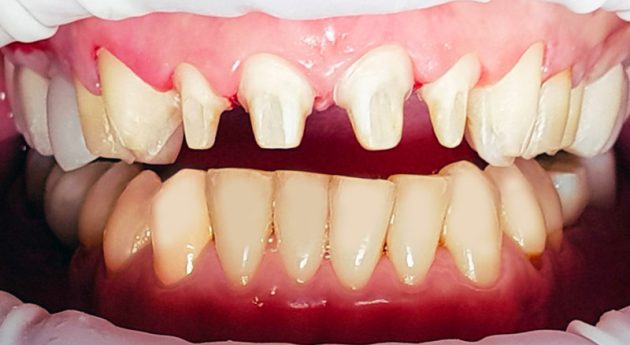

Extremely thin ceramic veneers called "minimal invasive".
They are installed without grinding and without preparation. The leading model of this protocol is an American brand, number 1 in the world in its field.
In cases where there is no grinding of the teeth, we speak of “minimal invasive dental veneers“. This last technique has the advantage of being reversible, with a small loss of enamel during the removal because of the polishing of the enamel.
If the indication is well established, it is no less aesthetic than the previous technique, even at the cost of certain technical compromises, in particular the over-contours.
Both types of dental veneers are designed with a thin layer of ceramic that is durable over time. Both protocols have been validated by research, and give excellent results when performed by an experienced specialist.
Depending on your requirements and your aesthetic wishes, the installation of ceramic dental veneers will make your smile rejuvenation project a lasting reality for a very natural and discreet result or, on the contrary, for a very glamorous and Hollywood smile, always according to your choice.
“The harmony of your smile with your personality and the respect of your aesthetic choices is our duty as a cosmetic dentist. The patient chooses his or her aesthetic type and the cosmetic dentist executes his or her choices.”
Veneers are placed under anesthesia without fear or pain
Dental sedation with an anesthesiologist: As it takes almost half a day of operating time for the bonding, a light dental sedation by narco-hypnosis is often practiced so that the patient does not feel any discomfort, impatience, or weariness.
Therefore, if you do not wish to have intravenous dental sedation by an anesthesiologist, a local comfort anesthetic is used to reduce discomfort during preparation and bonding.

INTERVIEW with the DOCTOR-DENTIST
aesthetic dental medicine :
The natural extension of cosmetic surgery
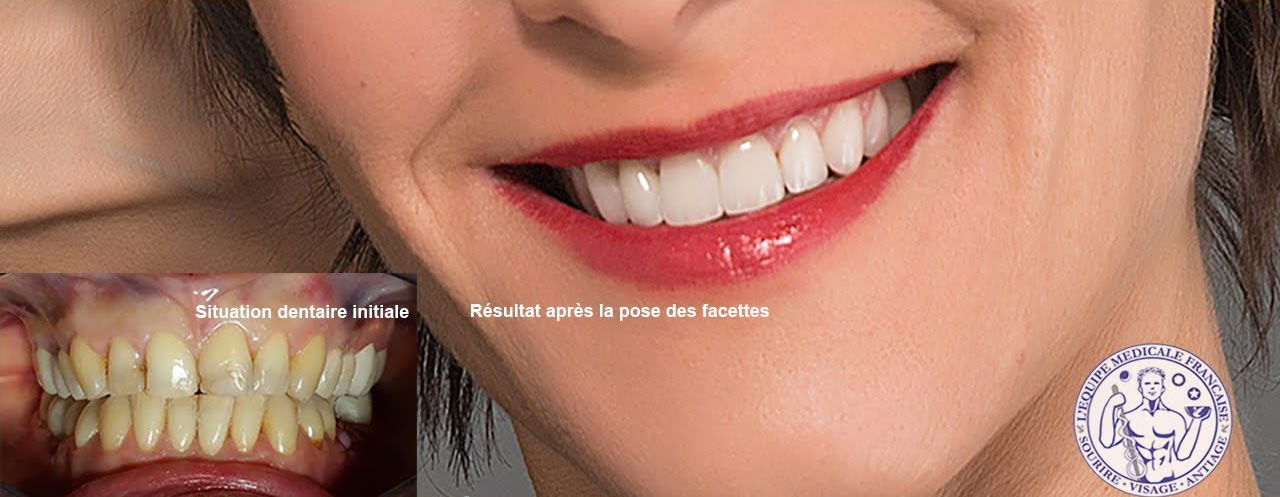
WE ANSWER YOUR QUESTIONS
ON DENTAL VENEERS
The dentist answers your most frequently asked questions. If your clinical case is not listed, please contact him for a consultation.
The price is determined by your dentist according to your aesthetic requirements;
The techniques and materials used for veneers vary in price;
Other factors impact the overall price of your dental veneers and your payment: the number of veneers to be bonded;
The firm will provide you with an estimate and a financial agreement before any decision is made.
Ceramic dental veneers have a lifespan of about 20 years, if you follow the advice of your dentist and adapt a perfect oral hygiene and without bruxism or wearing a night guard daily.
There is no minimum age to have dental veneers. They can be applied at any age but only after the majority.
In some cases, for younger patients, veneers can be placed to correct broken or damaged teeth, or as an alternative to heavy orthodontic treatment.
No, dental veneers are maintained exactly like natural teeth. Oral hygiene must be impeccable. Ultrasound should not be used for scaling.
- Aesthetically, it is by far the best solution. The aesthetic result is superior to all other techniques with composite resins. The color control is perfect in its three components: hue, saturation, brightness;
- Better stability over time;
- Better periodontal biocompatibility of the ceramic or zirconia material;
- Better hygiene thanks to the polished surface of the ceramic;
- Better marginal sealing;
No, if they are installed without grinding using minimally invasive techniques.
A contraindication is severe bruxism
Anterior teeth can be shortened by wear due to bruxism:
Ceramic dental veneers can correct this wear of the anterior teeth by lengthening them to their original length before the wear.
The bruxism is a mania that consists of grinding or clenching the teeth very hard, usually at night. The posterior teeth are abraded and their height decreases.
As a result, the jaws come together and the teeth of the smile will come together in turn. If the posterior wear continues, then this will lead to wear of the anterior teeth.
If veneers are placed on the smile teeth at this time and if the height of the back teeth continues to decrease due to abrasion from bruxism, then the dental veneers bonded to the front teeth will have abnormal and/or overly strong contacts and will wear or break abnormally.
It is therefore essential to correct the wear of the posterior teeth, consecutive to bruxism, by bonding cosmetic prostheses equivalent to dental veneers for the anterior teeth: we speak of dental veneers for the front teeth andinlay,onlay,overlay or top table in ceramic for premolars and molars, i.e. the back teeth.
Protective aligners should be worn by the patient at night to prevent further damage to the teeth and the work performed.
A contraindication is periodontitis and/or dental polycaries
The initial caries and periodontal assessment is essential.
A Q.PCR test to assess the periodontal flora is recommended at the beginning of treatment to diagnose pathogenic bacterial activity and/or candidiasis.
Caries, gingivitis and periodontitis must be treated and stabilized prior to the application of dental veneers.
Insufficient or difficult oral hygiene is an absolute contraindication.
